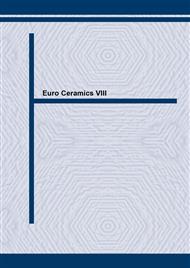[1]
A.K. Stamper and S.L. Pennington: J. Electrochem. Soc. Vol. 140 (1993), p.1748.
Google Scholar
[2]
A.J. Lowe, M.J. Powell and S.R. Elliot: J. Appl. Phys. Vol. 59 (1986), p.15.
Google Scholar
[3]
I. Kobayashi, T. Ogawa and S. Hotta: Jpn. J. Appl. Phys. Vol. 31 (1992), p.336.
Google Scholar
[4]
T. Kim and K. Ohnishi: Electron. Commun. Jpn. Vol. 74 (1991), p.63.
Google Scholar
[5]
J.L. Dupuie, E. Gulari and F. Terry: J. Electrochem. Soc. Vol. 139 (1992), p.1151.
Google Scholar
[6]
S.M. Sze: VLSI Technology (McGraw-Hill Book Company, New York, 1988), p.268.
Google Scholar
[7]
R.E. Rocheleu and Z Zhang: Thin Solid Films Vol. 220 (1992), p.73.
Google Scholar
[8]
M. Gupta, V.K. Rathi, R. Thangaraji and O.P. Agihotri: Thin Solid Films Vol. 204(1991), p.77.
Google Scholar
[9]
G. Kelm and G. Jungnickel: Mater. Sci. Eng. Vol. A139 (1991), p.401.
Google Scholar
[10]
Z. Lu, S.S. He, Y. Ma and G Lucovsky: J. Non-Cryst. Solids Vol. 187 (1995), p.340.
Google Scholar
[11]
L.S. Zambom, R.D. Mansano, R. Furlan and P. Verdonck: Thin Solid Films Vol. 343-344(1999), p.299.
DOI: 10.1016/s0040-6090(98)01587-9
Google Scholar


